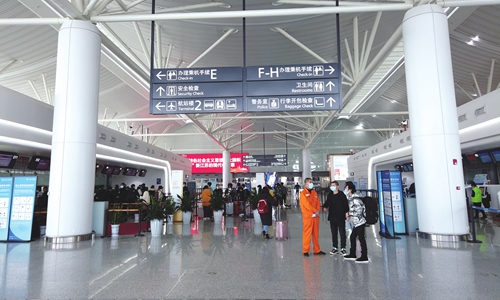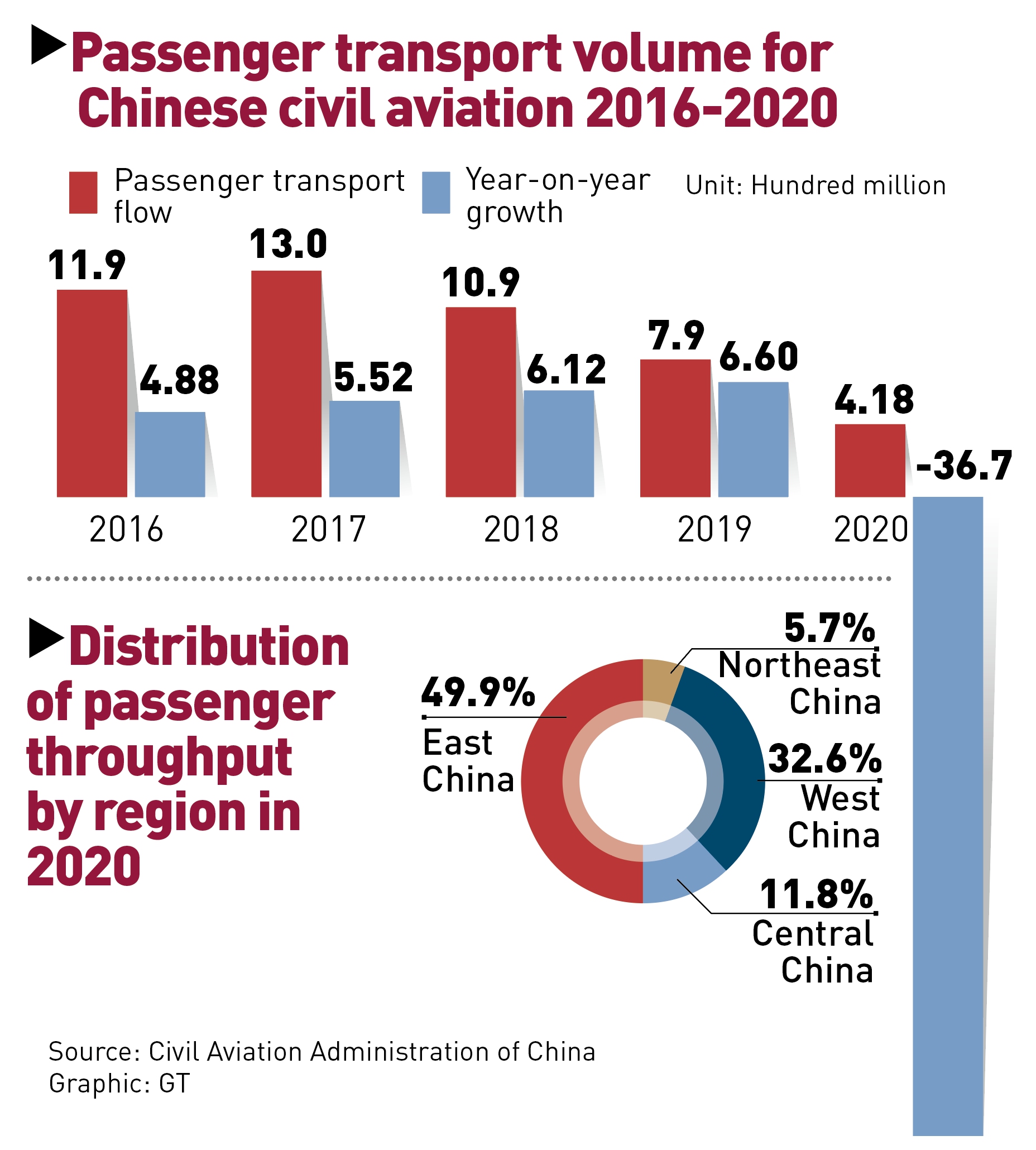
A terminal of Nanjing Lukou International Airport in Nanjing, East China's Jiangsu Province Photo: VCG
The Nanjing Lukou International Airport, the source of China's latest virus resurgence, has forced Nanjing into a de-facto shutdown, triggering a new localized wave of infections across China, and bringing into question effectiveness of the airport's epidemic prevention strategy.The Lukou airport incident is not an isolated case. Shanghai Pudong International Airport in November last year and Shenzhen Baoan International Airport in June this year both reported infections of ground workers. There have been at least 11 locations in China which have reported imported cases including railway stations, bus stations and airports.
The civil aviation industry is under significant pressure from the beginning of the epidemic, irrespective of passenger volume and industry profitability.
Official data showed that in the first half of 2021, the civil aviation industry recorded some recovery, with passenger transportation volume recovering to 76.2 percent of pre-epidemic levels.
Facing the imported cases, the Chinese aviation industry now faces the strictest stress test ranging from flying safety, efficiency and the COVID-19 control measures.
Data from Civil Aviation Administration of China (CAAC) showed that the industry facilitated 417.7 million passenger trips in 2020, and there were 85 airports with an annual passenger throughput of more than 1 million passengers. Among them, the passenger throughput of airports in Beijing, Shanghai and Guangzhou accounted for 18.2 percent of total passenger throughput.
CAAC data also showed that passenger throughput of Nanjing Lukou Airport in 2020 ranked 12th in the country. The large passenger throughput has accelerated the spillover of the epidemic.
Given the operational requirements of civil aviation transportation, a close-contact passenger can reach any place in the country within hours, which makes the airport epidemic prevention prone to spillover infection.
This latest incident has led many to question whether the Nanjing airport was under mistargeted regulation, or with sub-standard implementation.
According to media reports, the airport outsourced its cleaning to external companies, leaving a vacuum in the management of the cleaners. The companies, aiming to cut costs, did not arrange special personnel for cleaning work in areas and airlines of international flights.
According to media reports, there are also other loopholes in the implementation of the airport's epidemic prevention measures, such as temperature measurement, disinfection, nucleic acid testing. However, for such issues, aside from staff failing to discharge their duties, the design of systems must also be put under the microscope.
On Wednesday, CAAC held a meeting, and vowed to further strengthen civil aviation epidemic prevention and control measures.
Feng Zhenglin, head of CAAC, said that the administration will implement closed-loop management practices for maintenance workers who directly contact international passengers or cargo. They will make sure that employees who work on overseas and domestic flights do not mingle. The CAAC will increase the frequency of nucleic acid tests for employees, and key front-line workers will take one test every two days. Considering Delta variant's new characteristics and virulence, the CAAC will pay special attention to strengthen pandemic control measures on ground service personnel.
In particular, the CAAC will strengthen management on third-party outsourcing business employees who work in airport operation areas, while reappraising the current pandemic prevention requirements and standard, such as disinfection standards, procedures and review mechanisms, based on the new variant's features, Feng said.
Market insiders said that China's civil aviation management system was originally established in the mold of European and American structures. In terms of regulations to ensure the safety of passengers, China now has even stricter regulations and this is why China' civil aviation has an almost unblemished record over nearly10 years.
Similarly, for epidemic prevention and control measures, CAAC has also issued relevant regulations as early as the beginning of the epidemic. In February 2020, CAAC updated a seventh edition of guidelines for best practice.

Graphic: GT


